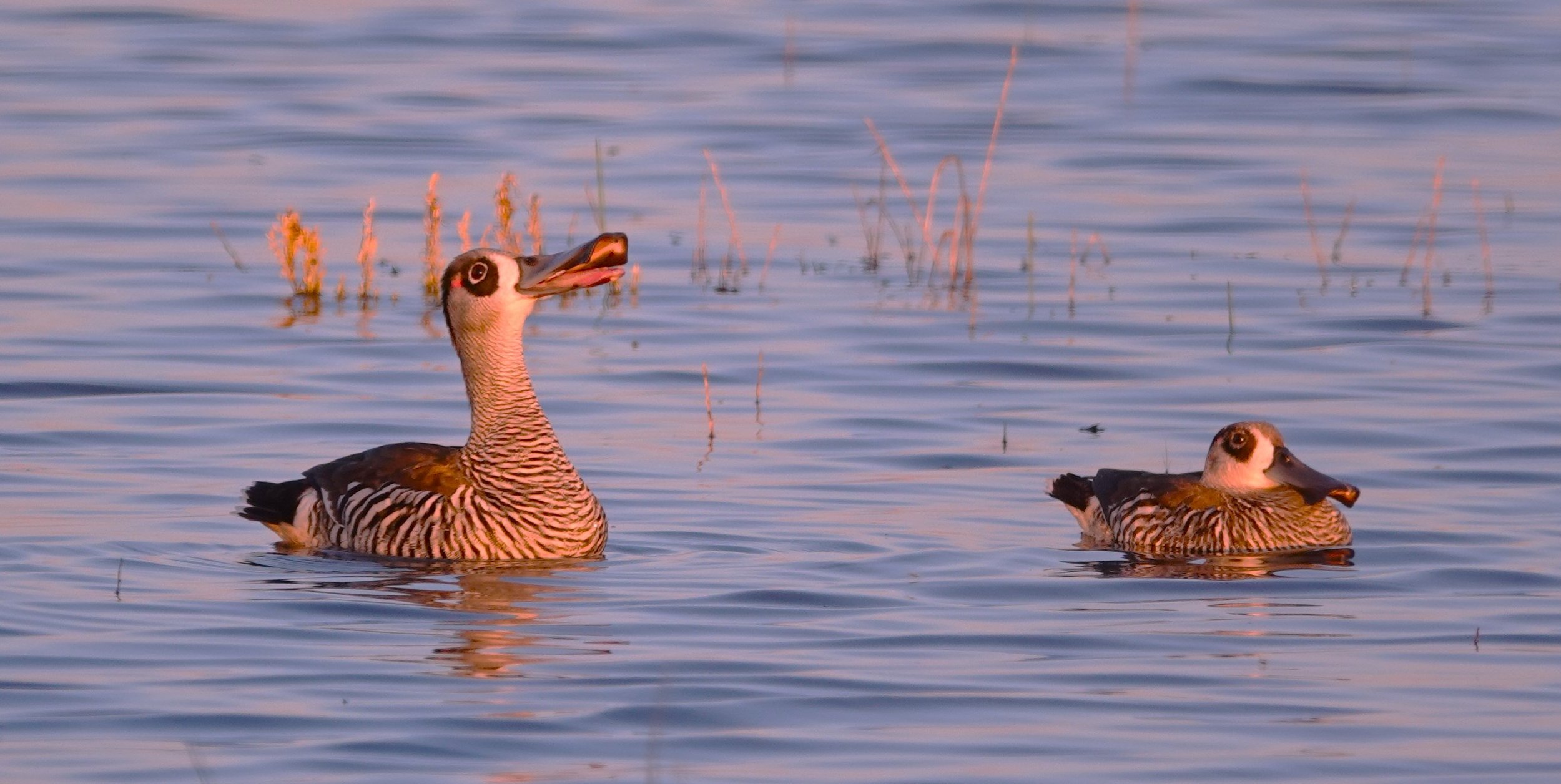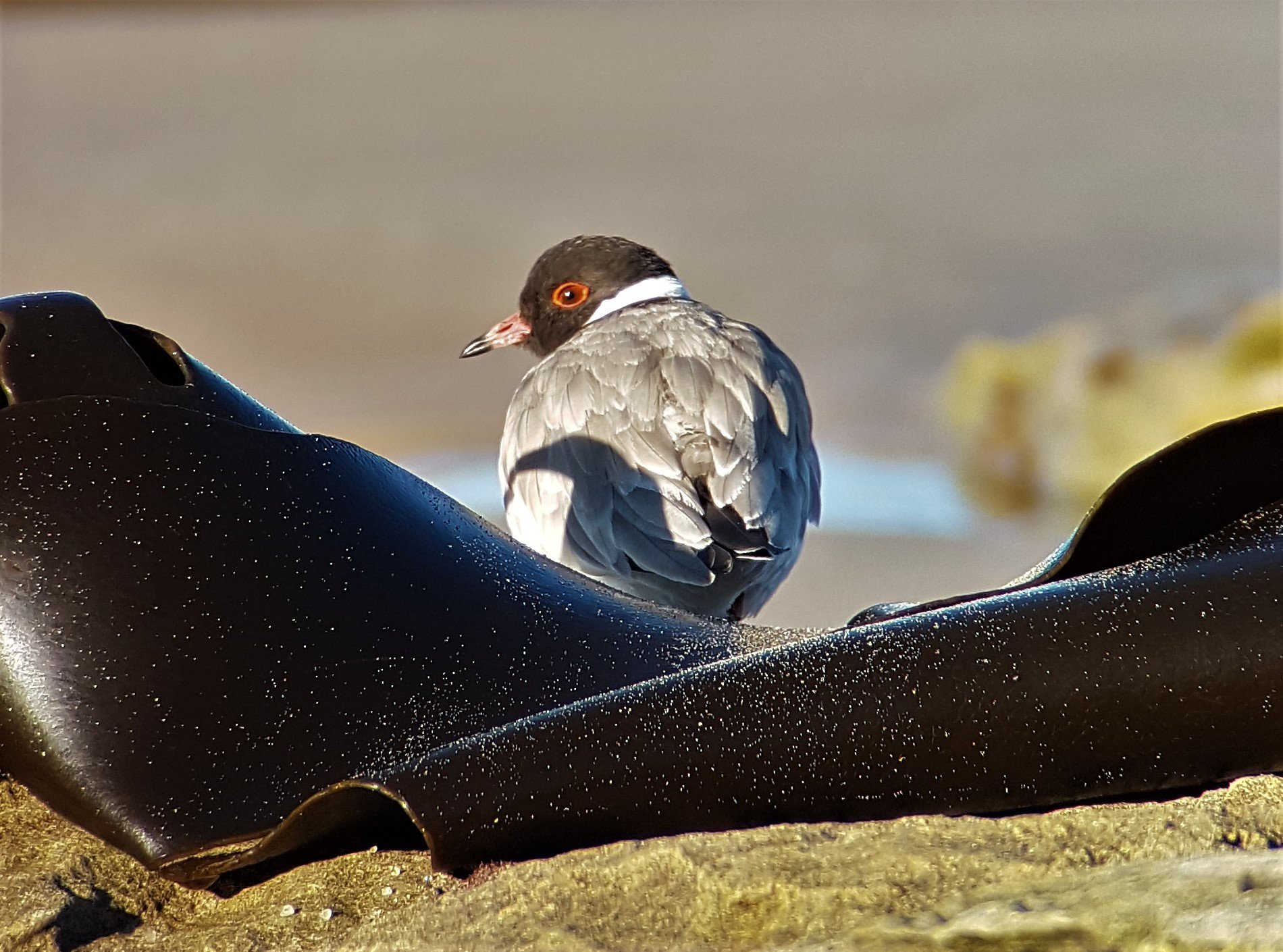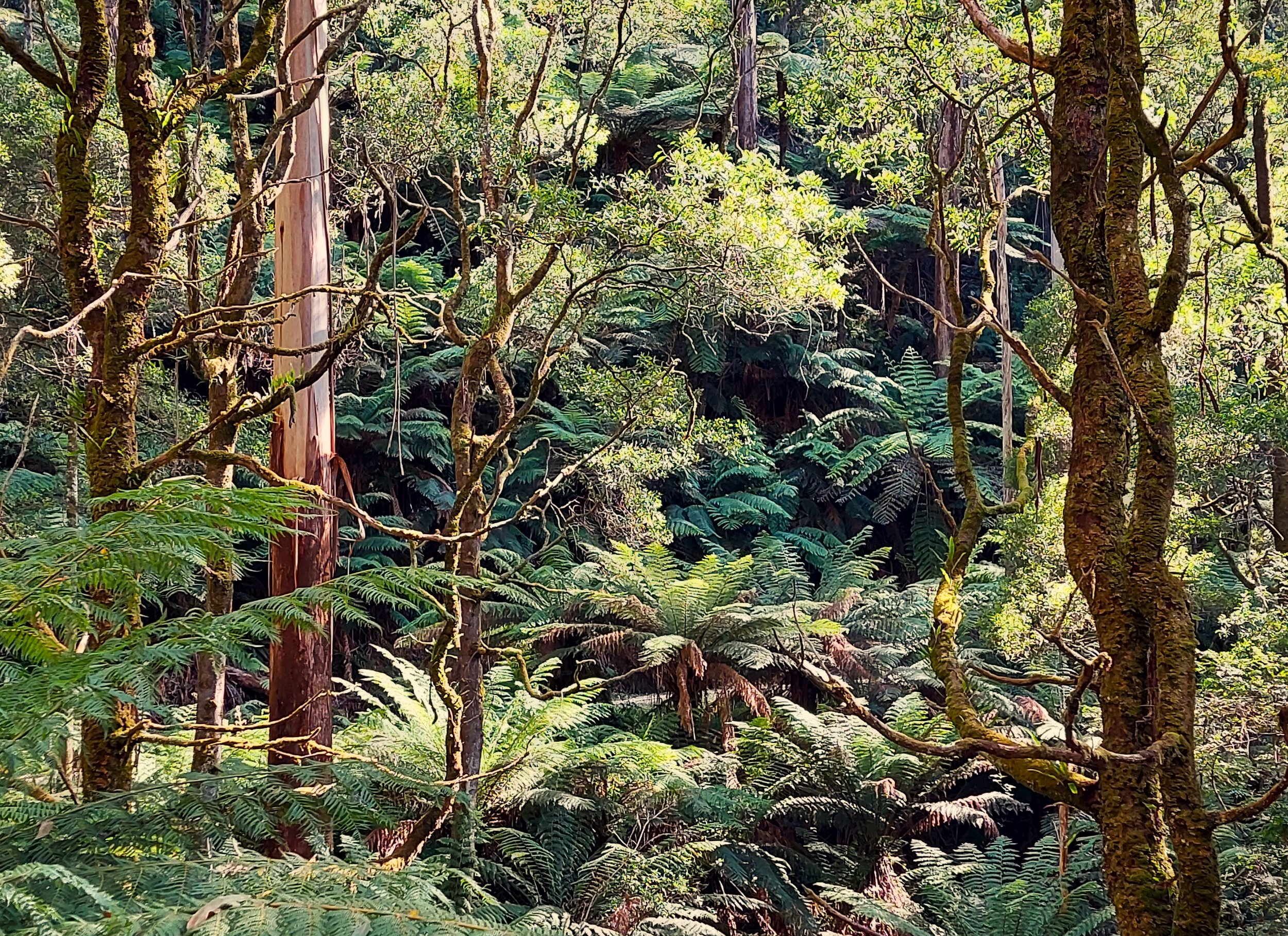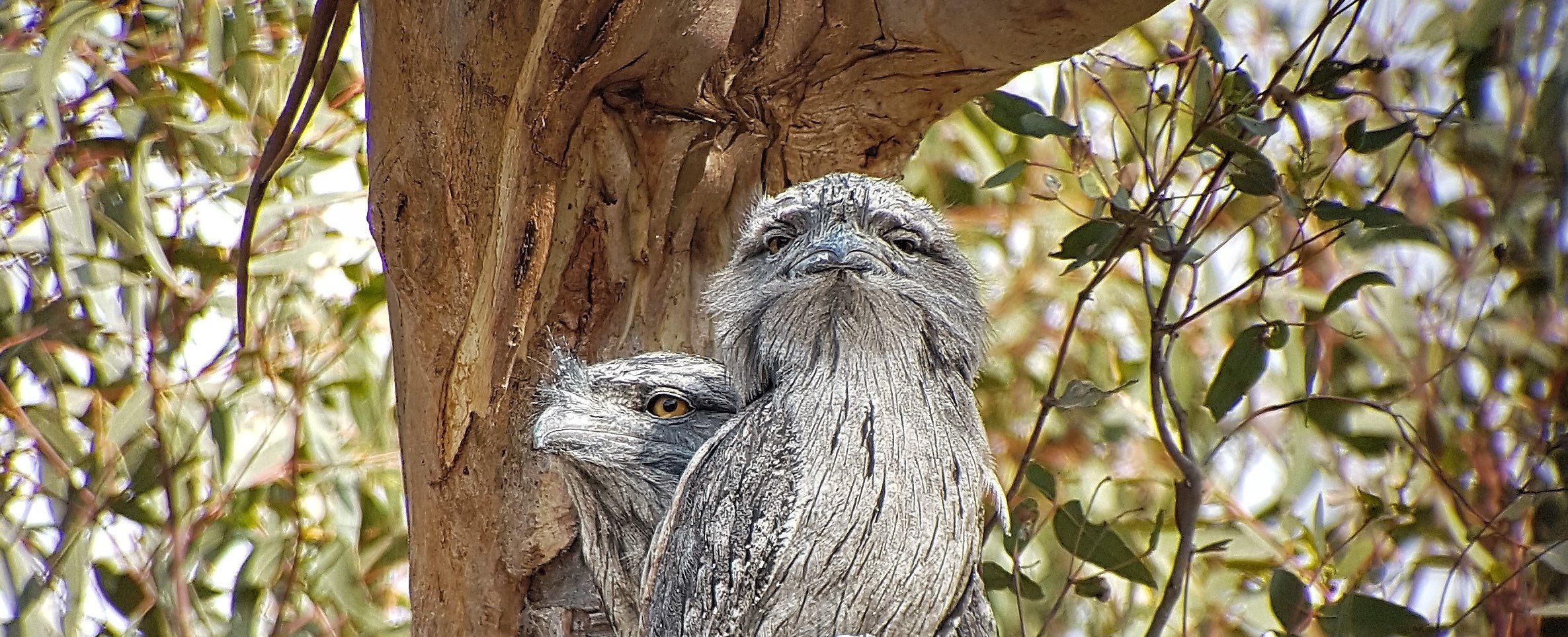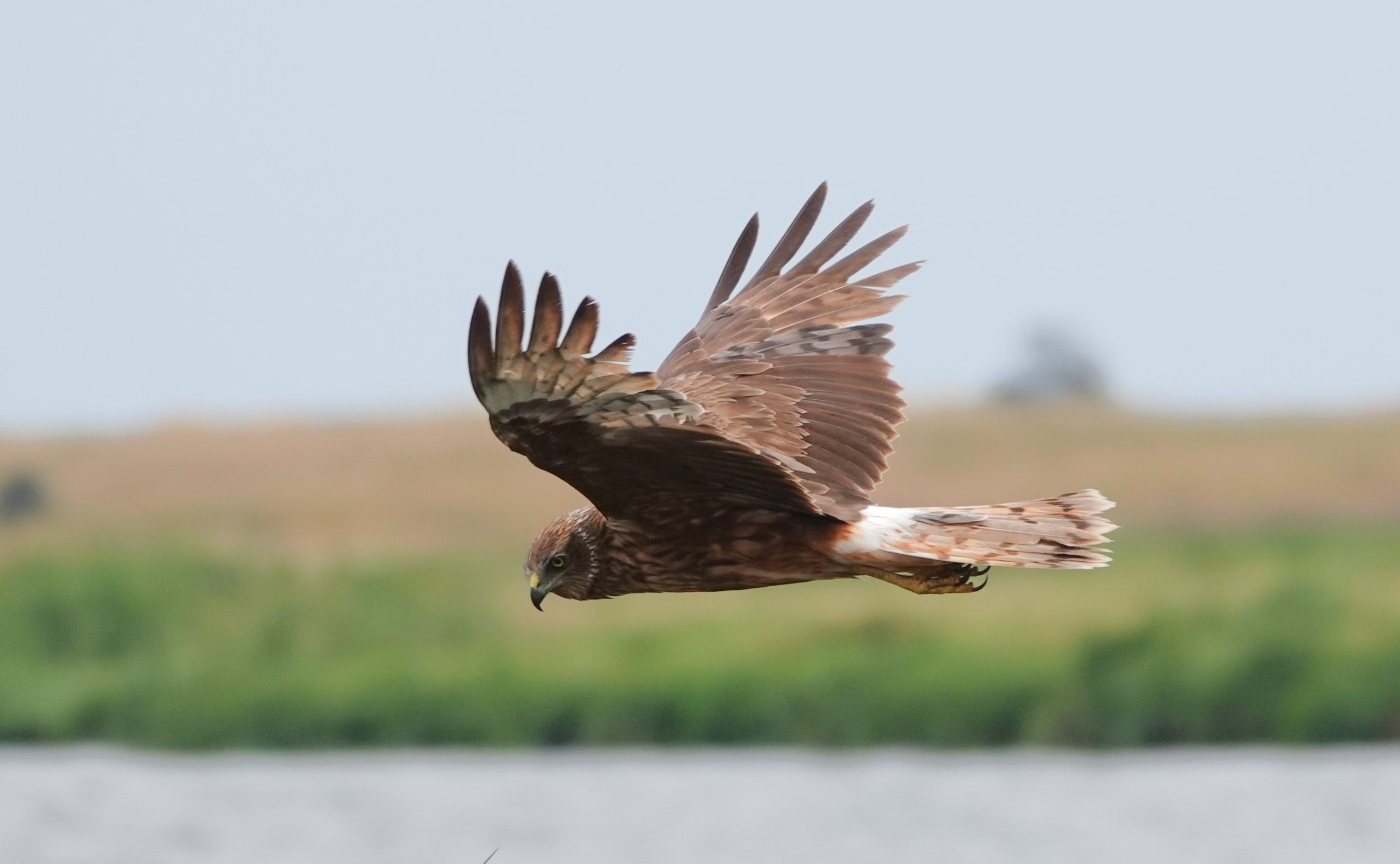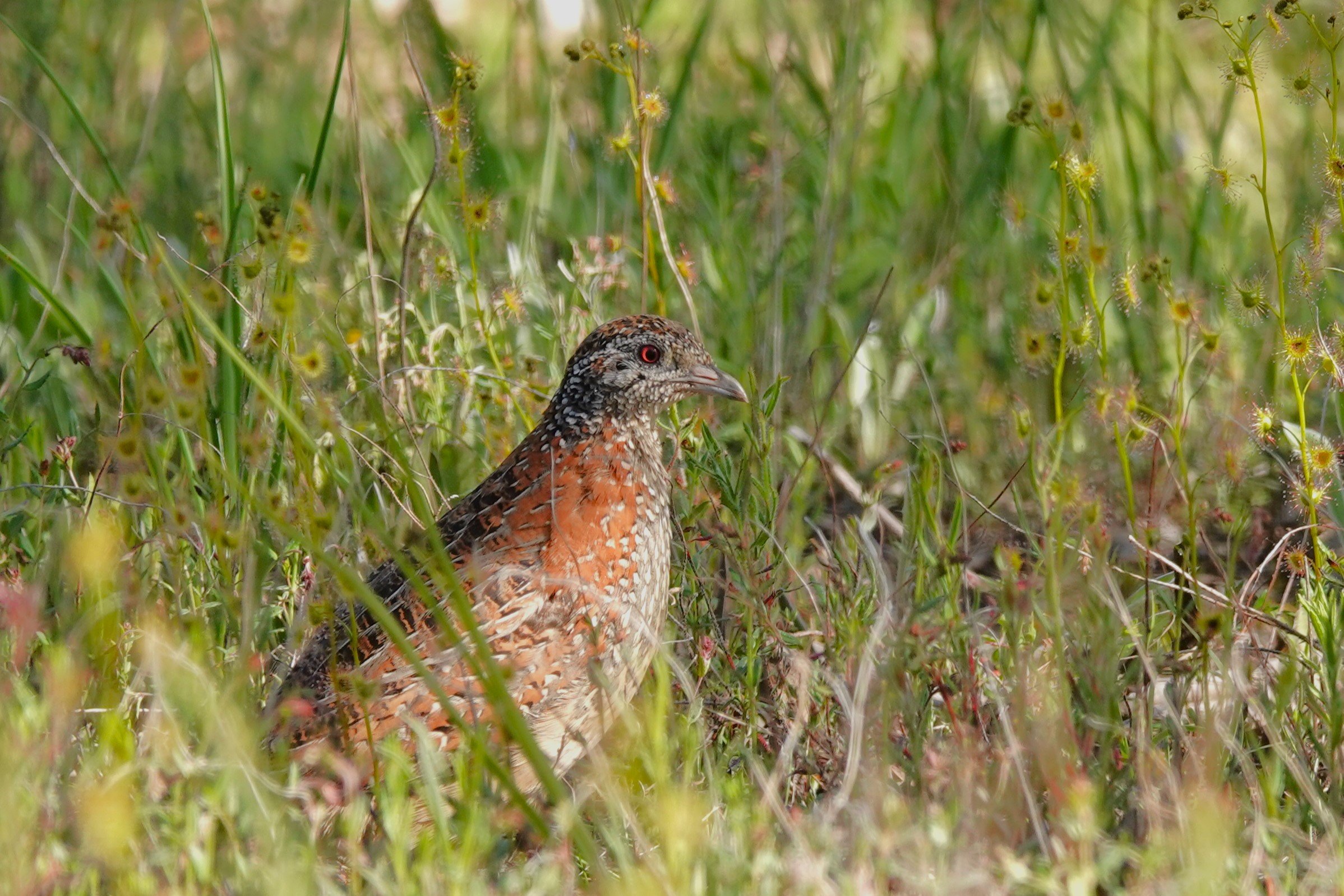Tours start and finish in the Melbourne area. The following itineraries have been tried and tested over two decades. More targeted tours for specific bird species can be easily arranged.
Tour 1. Woodlands and Wetlands including the Wetlands at Werribee (WTP)
On this tour we shall spend time exploring one or two of the diverse woodlands found a short distance to the west of Melbourne. Depending on conditions and the season this may include Woodlands Historic Park (a River Red Gum dominated grassy woodland), Eynesbury Grey Box Forest, Long Forest (Bull Mallee and Box), You Yangs Regional Park (Yellow Gum, Red Gum and Wattle), Serendip Sanctuary (regrowth forest and wetlands) and/or the Brisbane Ranges National Park (mixed forest including Stringybarks, Ironbarks, Gums and Box trees).
A wide range of bushland birds are found in this area representing most Victorian bird families plus a few scarcer and/or cryptic species such as Little Eagle, Tawny Frogmouth, Purple-crowned Lorikeet, Satin Flycatcher (summer), Yellow-tufted Honeyeater, Blue-winged Parrot (summer), various Cuckoos, Crested Shrike-tit, Speckled Warbler, Chestnut-rumped Heathwren, Scarlet Robin, Red-capped Robin, Diamond Firetail, Varied Sitella and Spotted Quail-thrush to name a few. Spring and summer migrants increase the diversity
A few hours of birding in the woodlands added to a visit to the Wetlands near Werribee (WTP) will connect us with a huge range of bird species at any time of year. At and around the WTP waterbirds, grassland birds and raptors are abundant. Conditions vary from season to season and even week to week. Migratory shorebirds and Terns are a feature especially from September to March, raptors are varied and common all year with a peak in late summer, rails and crakes are usually seen when water levels are just right, duck numbers fluctuate with a good variety nearly always present, winter brings Blue-winged Parrots and Flame Robins, plus rarities can and do turn up any time. Brolgas, Cape Barren Geese, Egrets and Spoonbills, Striated Fieldwren and Zebra Finch, a visit is never dull, the possibilities are long
Aus$680-00 total for a single person/couple Aus$780-00 total for a shared tour (2-4 people) - includes drinks and snacks, lunch not included - larger groups are possible
Tour 2. The Surf Coast (plus Western Treatment Plant)
This tour takes us down to Victoria’s Surf Coast (between Torquay and Lorne) for a day’s birding near the start of the world famous Great Ocean road. We will explore a variety of different habitat types in an action packed day including ocean beaches and headlands, coastal heathlands and coastal woodlands of Ironbark and Stringybark.
Along the coast we will look for the endangered Hooded Plover and various seabirds may be visible from shore such as Gannets, Terns, Shearwaters, Jaegers and Albatross depending on the season and the winds
Hooded Plovers
The woodland and heathland areas hugging the coastline here hold a diversity of vegetation types and are home to a wide range of bush birds including some localised specialties. The Rufous Bristlebird is endemic to the Western Victorian coastline plus adjacent South Australia.
We should see this localised skulker on this tour whilst the supporting cast of possible species includes Gang-gang Cockatoo, Blue-winged Parrot, Bassian Thrush, Tawny-crowned Honeyeater, Southern Emu-wren, Chestnut-rumped Heathwren and Rufous Bristlebird. Lewin’s Rail, Yellow-tailed Black-cockatoo, Australian King-parrot, Olive Whistler, Dusky Woodswallow, Striated Fieldwren, Scarlet Robin, Satin Flycatcher (summer), Beautiful Firetail, Singing Honeyeater, Grey Currawong, Crescent Honeyeater, Black-faced Cormorant, Grey Goshawk, Forest Raven, Crested Shrike-tit, Satin Bowerbird, White-throated Needletail (summer) and lots lots more. Lots of great birds and some rarer species to try for in beautiful surroundings
Blue-winged Parrot
Our drive from Melbourne down to the Surf Coast takes us right past the WTP near Werribee where we will be able to make some targeted stops at the best current sections of this vast area, both on the way and on the way home adding greatly to the diversity of species for this tour.
Aus$680-00 total for a single person/couple Aus$780-00 total for a shared tour (2-4 people) - includes drinks and snacks, lunch not included - larger groups are possible
Tour 3. Great Dividing Range (Full day - October to mid-March only)
Exploring the hills and mountains east of Melbourne deserves a full day especially in the warmer months of summer when breeding migrants add to the resident birds. Driving through the suburbs various wetlands and riverine woodlands may be visited. At certain times roosting sites for Tawny Frogmouth and Powerful Owl can be worth visiting. Small wetlands on the drive can produce rails and crakes in the right season as well as a variety of commoner waterbirds and bush birds
The main part of the day will be spent further out in the tall lush mountain forests of the Central Highlands. These spectacular forests of towering Eucalypts and giant Tree Ferns support a range of birds that reach the limit of their range here including the Superb Lyrebird, Pilotbird, Lewins Honeyeater, Large-billed Scrubwren, Black-faced Monarch, Eastern Whipbird and Brown Gerygone.
Cool temperate rainforest with Tree Ferns and Myrtle Beech
Other wet forest specialities to look for include such gems as Olive Whistler, Flame, Rose and Pink Robins, Satin Flycatcher, Gang Gang Cockatoo, Yellow-tailed Black Cockatoo, Australian King-parrot, Brush Cuckoo, Cicadabird, Rufous Fantail, Satin Flycatcher, Satin Bowerbird, White-throated Needletail, Bassian Thrush and Red-browed Treecreeper plus all the commoner forest species.
Rose Robin
Our route may also include some of the woodlands found to the north-east of the city area where rocky soils on low ranges support stringybark and box trees with diverse wildflowers. Crested Shrike-tit, Sacred Kingfisher, Scarlet Robin, Olive-backed Oriole, various Cuckoos, Pardalotes, Honeyeaters, Thornbills, Weebills and Varied Sitellas may be sighted in more the lower and more open forests
Yellow-tailed Black-cockatoo
This stunningly beautiful countryside holds some sought after south-east Australian endemics to be found in idyllic surrounds.
Aus$680-00 total for a single person/couple Aus$780-00 total for a shared tour (2-4 people) - includes drinks and snacks, lunch not included - larger groups are possible
Tour 4. Dandenong Ranges NP and the WTP (Werribee)
This tour is designed to give a taste of the mountains found to the east of Melbourne, home to the remarkable Superb Lyrebird, the worlds largest passerine, combined with a visit to the wonderful wetlands at Werribee (WTP) in the afternoon.
As with the full day Great Dividing Range tour, targeted stops on the way through the suburbs may be made in the right season. The best part of the morning however will be spent enjoying the mighty Mountain Ash forests in the Dandenong Ranges NP where a good range of wet forest species occur including Lyrebirds
Photo credit to Chris Tzaros
A nice introduction to wet forest birding is guaranteed with Rosellas, Whistlers, Robins, Scrubwrens and Thornbills sure to be seen. Other possible sightings include Eastern Whipbird, Rose Robin, Crested Shrike-tit, Large-billed Scrubwren, Brown Gerygone, Crescent Honeyeater, Yellow-tailed Black-cockatoo, King Parrot, White-throated Needletail, Satin Flycatcher etc whilst winter is also good for Olive Whistler and Bassian Thrush
And for the afternoon the freeway will take us easily across Melbourne and out to the WTP at Werribee where a birding wonderland awaits us. A few hours at Werribee is plenty of time to encounter a wide range of species targeting the best sections for the season and the tides
This tour can be run all year with Lyrebird activity at its peak in winter and still a nice range of other bush birds present in idyllic surroundings
Aus$680-00 total for a single person/couple Aus$780-00 total for a shared tour (2-4 people) - includes drinks and snacks, lunch not included - larger groups are possible
Tour 5. Central Victoria – The Box-Ironbark country
With freeways heading north from Melbourne it is possible to visit the inland slopes of the Great Dividing Range in a day. North of the divide the rainfall is lower, and the days are sunnier and warmer, with habitats opening out allowing for easier birding. There are also many large tracts of bushland with endless quiet bush tracks to explore.
This tour typically starts with a one and a half hour easy drive north from Melbourne. A different suite of species occur here in the “box-ironbark” country to those found in southern Victoria. A wide range of Honeyeaters occur, taking advantage of year around nectar supplies including the three classic box ironbark species (Yellow-tufted, Fuscous and Black-chinned).
Black-chinned Honeyeater
Species that may be found include Musk, Purple-crowned and Little Lorikeets. Swift Parrot (winter), Crimson and Eastern Rosellas, Red-rumped Parrot, Powerful Owl (roosting sites may be checked), Peaceful Dove, Rainbow Beeeaters (summer), Scarlet Robin, Red-capped, Flame Robin (winter), Jacky Winter, Crested Shrike-tit, Olive-backed Oriole, Dusky Woodswallow, Varied Sitella, White-bellied Cuckoo-Shrike, Crested Bellbird, Speckled Warbler, Painted Button-quail
Painted Button-quail
Spotted Quail-thrush, Little Eagle, Wedge-tailed Eagle, Square-tailed Kite (spring and summer), Leaden Flycatcher (spring and summer), White-browed Woodswallow (spring to autumn), Sacred Kingfisher (spring and summer), Brown Treecreeper, Restless Flycatcher, White-browed Babbler, Mistletoebird, Chestnut-rumped Heathwren, various Cuckoos including Black-eared in season, Buff-rumped Thornbill, Diamond Firetail plus many more species of Thornbills, Pardalotes, Fantails and Whistlers !
Quality birding any time of the year on the sunny side of the ranges touring quiet rural areas with quaint country towns and a rich history of gold mining.
Aus$680-00 total for a single person/couple Aus$780-00 total for a shared tour (2-4 people) - includes drinks and snacks, lunch not included - larger groups are possible
TOUR 7. Werribee Wetlands (WTP)
Should you just wish to visit the enormous area that is the WTP aka “Werribee”, this tour may be the one for you. On this tour we will spend a three quarter day, long enough to explore the area more widely and with more time for observation and photography. As with all our tours to Werribee we will make the most of our visit targeting the best ponds and areas at the time, looking for any rarer species, and using the tides to our maximum advantage
The tour commences with an early pick up in the Melbourne area, and we will return mid afternoon.
Aus$550-00 for a single person/couple Aus$650-00 for a shared tour (2-4 people)




